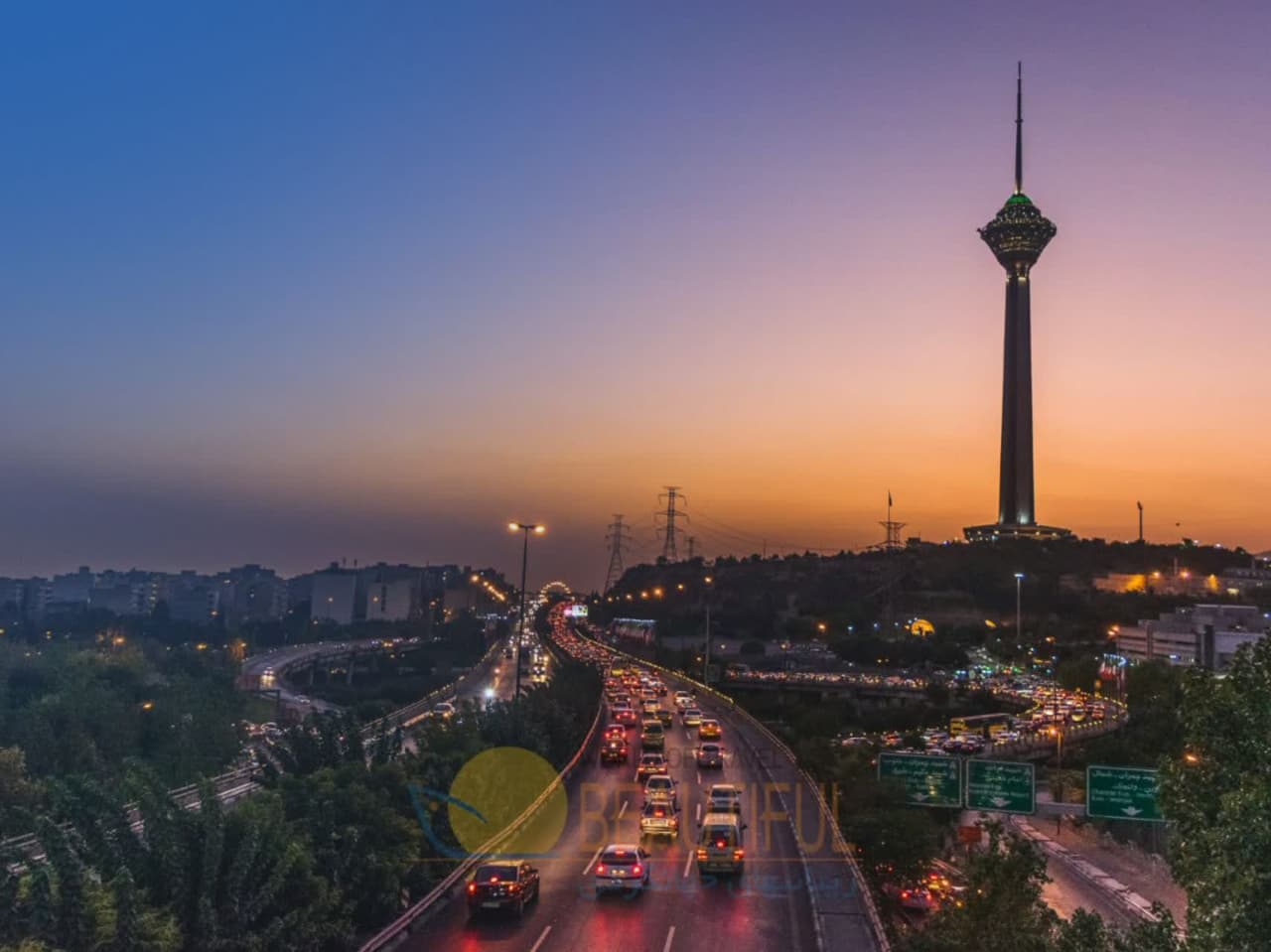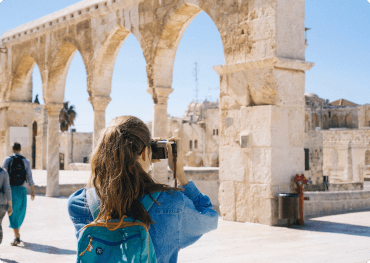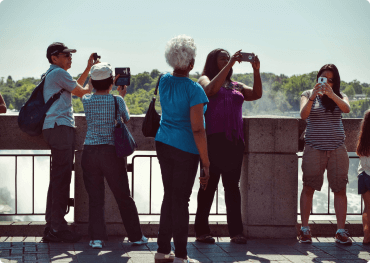
CL 526
Package Details
Day 1: Flight from your home country to Tehran capital of IRAN
We prepare ourselves for a fabulous trip to Great Persia.
Arrival to Tehran, after custom formality, meet and assist at airport and transfer to the Hotel.
O/N: Tehran
Day 2: Tehran
After breakfast, full day visit Tehran: Golestan Palace , Grand Bazzar , Carpet Musuem , Imamzadeh Saleh & Tajrish Complex.
Lunch in Grand Bazaar in traditional resturant
Dinner in Tajrish Bazaar in Public resturant
O/N: Tehran
The Golestan Palace is the former royal Qajar complex in Iran's capital city, Tehran.
The oldest of the historic monuments in Tehran, and of world heritage status, the Golestan Palace belongs to a group of royal buildings that were once enclosed within the mud-thatched walls of Tehran’s Historic Arg (citadel). It is a masterpiece of beautiful garden and buildings consist of collection of Iranian crafts and European presents from 18th and 19th century.
Golestan Palace Complex consists of 17 structures including palaces, museums, and halls. Almost all of this complex was built during the 200 years ruling of Qajarian kings. These palaces were used for many different occasions such as coronation and other important celebrations. It also consists of three main archives as the royal photographic archive collection 'Album khane', the royal library of manuscripts 'Ketabkhane Nosakhe khati' and the archive of documents 'Markaze asnad'.
The Grand Bazaar is an old historical market in Tehran, the capital of Iran.
Located at the Arg Square in Southern Tehran, it is split into several corridors over 10 km in length, each specializing in different types of goods, and has several entrances, with the main being the entrance of Sabze Meydan.In addition to shops, the Grand Bazaar of Tehran has contained banks, mosques and guest houses.
While the current bazaar is most associated with the 19th century onwards, its roots go back much further.
The area around Tehran has been settled since at least 6,000 BCE, and while bazaar-like construction in Iran as a whole has been dated as far back as 4,000 BCE, Tehran's bazaar is not this old. It is hard to say exactly when the "bazaar" first appeared, but in the centuries following the introduction of Islam, travellers reported the growth of commerce in the area now occupied by the current bazaar. The Grand bazaar is a continuation of this legacy.Research indicates that a portion of today's bazaar predated the growth of the village of Tehran under the Safavids' dynasty, although it was during and after this period that the bazaar began to grow gradually.
Carpet Museum of Iran exhibits a variety of Persian carpets from all over Iran, dating from the 16th century to the present.
The museum's exhibition hall occupies 3,400 square meters (10,200 ft²) and its library contains 7,000 books.
The museum was designed by the last Queen of Iran, Farah Diba Pahlavi. The perforated structure around the museum's exterior is designed both to resemble a carpet loom, and to cast shade on the exterior walls, reducing the impact of the hot summer sun on the interior temperature.
Imamzadeh Saleh is one of many imamzadeh mosques in Iran. The mosque is located at Tajrish Square in Tehran's northern Shemiran district. The mosque entombs the remains of Saleh, a son of the Twelver Shia Imam, Musa al-Kadhim, and is one of the most popular Shia shrines in northern Tehran.
Market Tajrish
The market on the one hand and Rehabilitation field, from the other competent shrine and the surrounding streets have access. Great emphasis Rehabilitation is one of the oldest accents located in Tehran in this market. Rehabilitation market a small sample of the Tehran bazaar is one of the oldest shopping centers Shamiran is the bridgehead and Rehabilitation connecting the two neighborhoods.
Day 3: Tehran-Qom - Kashan
After breakfast, check out hotel and drive to Kashan (247 km), en route visit Qom .In Kashan visit Fin Garden, Boroujerdi & Tabatabaei old houses in Kashan
Lunch & dinner in Public or traditional Restaurant during visit.
O/N: Kashan
Fin Garden, or Bagh-e Fin, located in Kashan, Iran, is a historical Persian garden. It contains Kashan's Fin Bath, where Amir Kabir, the Qajarid chancellor, was murdered by an assassin sent by King Nasereddin Shah in 1852. Completed in 1590, the Fin Garden is the oldest extant garden in Iran.
The origins of the garden may be anterior to the Safavid period; some sources indicate that the garden has been relocated from another place, but no clear picture of it has been found. The settlements of the garden in its present form was built under the reign of Abbas I of Persia (1571-1629), as a traditional bagh near the village of Fin, located a few kilometres southwest of Kashan. The garden was developed further during the Safavid dynasty, until Abbas II of Persia (1633-1666). It was highly recognized during the reign of Fat′h Ali Shah Qajar and was considerably expanded.
Home Borujerdian the historic city of Kashan is. The building is located in the neighborhood Sultan Mir Ahmad and in the second half of the 13th century Hijri built in Qajar era and was registered under the number 1083 in the national index. The house has a beautiful crescent-shaped symmetrical vents on the roof of the hall and pergola on one of the most beautiful manifestations of Persian architecture to display it. So that the inscriptions on all four sides of the hall, the building dates back to 1292 BC E…
Paintings, valuable and Gchbryhay this house, under the Sani-ol-Molk, the great Iranian painter and uncle Kamalolmolk been implemented. The owner of the house, Haj Seyed Mehdi Natanz Natanz businessmen residing in Kashan and architect of the master Ustad Ali Maryam was. Because of his many trips to the city of Boroujerd have known Boroujerdi. He loved the girl’s Tabatabai Tabatabai also one of the largest carpet merchant, and then leaves to consent to the marriage condition. His beautiful home which is now called the house Tabatabaian known as lived and Mehdi says he must build a house like my house to get my daughter to Hmsryt in.
Mehdi also accepts and ends after 7 years to build the inner courtyard and living at home after 11 years in the main hall is completed. Boroujerdi House in Kashan Cultural Heritage Administration is now home.
Brvjrdyhay historic house in Kashan in terms of popularity tourist attraction as a top choice UNESCO in 2015 and 2016 respectively.
Home Tabatabaian which was registered under number 1504, in the second half of the 13th century AH by Haj Seyed Jafar Tabatabai merchants Natanz resident of Kashan in the neighborhood Sultan Amir Ahmad was built.
Architect manufacturer of the master Ustad Ali Maryam and plaster involved in the art and drawings by students Mirza Abul Hassan Sani-ol-Molk Ghaffari Kashani, and under him were doing.
Day 4: Kashan– Nain - Yazd
After breakfast, drive to Yazd (391 km). En route visit Nain (Jameh Mosque of Nain)
Lunch & dinner in Public or traditional Restaurant during visit.
O/N: Yazd
The Jāmeh Mosque of Nā'īn: This mosque is perhaps one of the oldest mosques in Iran that although belong to hundred years ago but kept its original architecture. French professor, Arthurp Pops believed that the mosque foundation goes back to 9th century. It has a very simple plan but is still very beautiful.
Day 5: Yazd
After breakfast, full day visit Yazd : Mausoleum Rok al din, Zoroastrian fire temple, Friday Mousque, Amir chakhmaq Sq, Water Musuem.
Lunch & dinner in Public or traditional Restaurant during visit.
O/N: Yazd
Sayyid Rukn al-Din mausoleum of 8th century AD. Ah. . In Yazd , the Great Mosque of streets and alleys located Din Sydrkn this effect on 15 Persian date Azar 1314 with registration number 246 as one of the national monuments has been registered.
Yazd fire whereabouts of the Zoroastrian sacred fire in the city of Yazd and Temple Zoroastrians residing in the city. The main building temples on height of about 21 meters off the ground and in the large yard trees evergreen cypress and pine covered, is located. Figure Forouhar and stone capitals that gives it a special beauty blue pond in front of the building. The temples of properties Altar of the water.
The Hall's main building and a wall of stone capitals flowering gems work of artists from Isfahan. This rock artists in Isfahan shaved and then to Yazd have. Tile journalist Forouhar on the entrance, a tile Yazdi artists and architecture of this building of architecture Corp fire temples was persuaded impact.
Fire inside the fire burns more than 1,500 years remains bright. This fire is the fire Frvz·hay Carian temple in LARESTAN that Aghda Yazd was brought and kept clear there was nearly 700 years and then in 522 of Aghda in Ardakan Ardakan, Yazd were also nearly 300 years, and in year, 852 ducks were taken to the city. First, in a neighborhood called " Khalaf Ali Khan " a great priest in the house called " priest Adhargushasb shooter " was held in the year 1313 after the construction of the temple was brought into it.
The Jāmeh Mosque of Yazd is the grand, congregational mosque (Jāmeh) of Yazd city, within the Yazd Province of Iran. The mosque is depicted on the obverse of the Iranian 200 rials banknote.
The 12th-century mosque is still in use today. It was first built under Ala'oddoleh Garshasb of the Al-e Bouyeh dynasty. The mosque was largely rebuilt between 1324 and 1365, and is one of the outstanding 14th century buildings of Iran.
According to the historians, the mosque was constructed in the site of the Sassanid fire temple and Ala'oddoleh Garshasb commenced building the charming mosque. The previous mosque was constructed by order of Ala'oddoleh Kalanjar in 6th century A.H., however the main construction of the present building was done by order of "Seyyed Rokn Al-din Mohammad QAZI".
Amir Chakhmaq Maidan Square in the city of Yazd is. Yazd Amir Chakhmaq of the market , relying , a mosque and two cistern dating back to the Timurid period is. Relying Amir Flint in 1330 and the mosque, Amir Flint in 1341 in the national index Iran were registered. Amyrchqmaq field, one of the most remarkable collections of historical and tourism is the city of Yazd. Amyrjlalaldyn Chqmaq , captains and rulers of the Timurid Shahrukh in solar 8th century when the ruling was Yazd, a set of lean , square, public baths , caravanserais , monasteries , Qnatkhanh and cold water and in so doing promote the build up of Yazd Fatima Khatun, wife, helped him. In 1330 Hijri relying Amir flint and flint Emir Mosque in 1341 number 383 and number 247 on the national index were registered independent. The buildings and other accession as Amir Chakhmaq collection also reached number 2416 to the National Register.
Yazd Water museum in Yazd province is one of the most spectacular museums in the city due to its proximity to the Amir Flint is a great tourist interest.Yazd Water Museum At the same time holding the First International Conference on Ardbyhsht 1379 Hijri aqueduct opened in the city of Yazd.
The museum is the perfect place for recognizing historical buildings and monuments related to the water. The museum is located in the north of the city of Yazd Amir Chqmaq.
The museum subterranean drilling equipment, express and equipment to measure the volume of water in the canals of lighting, water and devoted documents dealing with old letters, manuals and documents mirab water distribution, water storage containers and many appliances and other valuable objects are kept. The museum is set up in the historic home Hatter.
Day 6: Yazd - Shiraz
After breakfast, drive to Shiraz (438 km), in the way visit Pasargad.
Lunch & dinner in Public or traditional Restaurant during visit.
O/N: Shiraz
Pasargadae World Heritage collection is a set of ancient structures Brjaymandh from the Achaemenid the city of Pasargadae in Fars Province lies.
This total includes buildings such as Tomb of Cyrus the Great , Pasargadae mosque , declared the king's garden , the palace gates , bridges, levee House , House suite , two pavilions , waterfront, garden cress, Tomb of Cambyses , defensive structures Tel bed , inn Mozaffari , sacred ground and Bolaghi Gorge is.
This set the fifth set is registered in the World Heritage List in Iran at a meeting of UNESCO in July of 1383 in China was held due to many factors hundred per cent on the World Heritage List was registered.
In 529 BC, Cyrus the tribes of the Scythians in Central Asia (North East of Iran) attacked and are at war with massagetae was killed. He was buried in Pasargadae.
Day 7: Shiraz
After breakfast, full day visit Shiraz: Tomb of Hafez, Eram Garden, Zandieh Complex (Bazzar, bath,Museume)
Lunch & dinner in Public or traditional Restaurant during visit.
O/N: Shiraz
The Tomb of Hafez and its associated memorial hall, the Hāfezieh, are two memorial structures erected in the northern edge of Shiraz, Iran, in memory of the celebrated Persian poet Hafez. The open pavilion structures are situated in the Musalla Gardens on the north bank of a seasonal river and house the marble tomb of Hafez. The present buildings, built in 1935 and designed by the French architect and archaeologist André Godard, are at the site of previous structures, the best-known of which was built in 1773. The tomb, its gardens, and the surrounding memorials to other great figures are a focus of tourism in Shiraz.
Eram Garden is a historic Persian garden in Shiraz, Iran.The garden, and the building within it, are located at the northern shore of the Khoshk River in the Fars province.
Both the building and the garden were built during the middle of thirteenth century by the Ilkhanate or a paramount chief of the Qashqai tribes of Pars. The original layout of the garden however, with its quadripartite Persian Paradise garden structure was most likely laid in eleventh century by the Seljuqs, and was then referred to as the "Bāq e Shāh" ("the king's garden" in Persian) and was much less complicated or ornamental. Cornelius de Bruyn, a traveller from the Netherlands, wrote a description of the gardens in the eighteenth century.
Zandieh set of buildings that included the market, and the bathroom is Vakil Mosque of Shiraz, as follows
Vakil Bazaar in Shiraz, Iran is one of the most traditional and historical markets at the behest of Karim Khan Zand (1172 - 1193 AD) and is now at the center of the city (East Martyrs' Square) is located. Lawyer historic mosque and baths are also next to the market.
Bathroom lawyer Karim Khan Zand was built by the Zand period. The bathroom in the center of the city and other nearby buildings Zand period such as markets and mosques lawyer's lawyer. The interesting part is the bathroom alcove called for the king Bvdh. part of the building number 917 has been registered in the national index Iran.
Vakil Mosque in Shiraz Zand set of buildings, next to bathrooms is a lawyer at the center of the city. It is one of the beautiful buildings and the Zand period is very strong, which is important in terms of art and architecture, the mosque order of Karim Khan Zand and has made plans for both the southern and eastern porch and yard are two. South yard integrated with stone columns and architectural characteristics from the spiral of Attraction is the mosque, which has 48 stone pillars integrated
Day 8: Shiraz – Perspolis- Isfahan
After breakfast, drive to Isfahan (483 km), in the way visit Perspolis.
Lunch & dinner in Public or traditional Restaurant during visit.
O/N: Isfahan
Persepolis the name of one of the ancient cities of Iran that joined over the years, the capital 's stately and ceremonial monarchy at the time of the Achaemenid Empire was. In this ancient city called Persepolis palace that during the reign of Darius , Xerxes and Artaxerxes was built and was built for about 200 years. On the first day of the New Year , many groups from different countries representing Satrapyha or governments gathered in Persepolis with diverse took offerings and gifts were presented to the king.
Persepolis in 518 BCE as the new capital of the Achaemenid the gamers began. Founder of Persepolis, Darius was, of course, after his son Xerxes and his grandson Artaxerxes I to extend this series to expand it added. Many existing knowledge about the history and culture of the Achaemenid stone inscriptions and Flznvshthhayy is available for the palaces and on the walls and the tablet is engraved.
Sumner has estimated that the plain of Persepolis which contains 39 residential camp was in the Achaemenid period 43, 600 people had. Historians believe that Alexander the Macedonian commander Greek in 330 BC, invaded Iran and burned Persepolis and probably a large part of the books, Achaemenid art and culture destroyed by it. However, the ruins of this place is still up and archeology of its ruins signs of fire and rush to acknowledge it.This place since 1979, one of Iran's record on the UNESCO World Heritage is.
Persepolis in the northern city near Shiraz , south of Fars province (northeast of Shiraz ) is replaced.
At a distance of six and a half kilometers from Persepolis, Naqsh-e Rustam is located.
Day 9: Isfahan
After breakfast, full day visit Isfahan: Naghse Jahan Sq (Imam Mosque , sheikh Lotfollah , Aliqapoo,Grand Bazzar) & Chehel Sotoun & Jameh Mosque.
Lunch & dinner in Public or traditional Restaurant during visit.
O/N: Isfahan
Naqsh-e Jahan Square, known as Imam Square, formerly known as Shah Square, is a square situated at the center of Isfahan city, Iran. Constructed between 1598 and 1629, it is now an important historical site, and one of UNESCO's World Heritage Sites. It is 160 metres (520 ft) wide by 560 metres (1,840 ft) long (an area of 89,600 square metres (964,000 sq ft)). The square is surrounded by buildings from the Safavid era. The Shah Mosque is situated on the south side of this square. On the west side is the Ali Qapu Palace. Sheikh Lotf Allah Mosque is situated on the eastern side of this square and at the northern side Keisaria gate opens into the Isfahan Grand Bazaar. Today, Namaaz-e Jom'eh (the Muslim Friday prayer) is held in the Shah Mosque.
The square is depicted on the reverse of the Iranian 20,000 rials banknote.
The Lotfollah Mosque : The Lotfollah Mosque had a secret entrance that spanned underneath the Maidan, from the Palace on the opposite side of the square.
Of the four monuments that dominated the perimeter of the Naqsh-e Jahan square, the Lotfollah Mosque, opposite the palace, was the first to be built. The purpose of this mosque was for it to be a private mosque of the royal court, unlike the Shah mosque|Masjed-e Shah, which was meant for the public.[16] For this reason, the mosque does not have any minarets and is of a smaller size. Indeed, few Westerners at the time of the Safavids even paid any attention to this mosque, and they certainly did not have access to it. It wasn't until centuries later, when the doors were opened to the public, that ordinary people could admire the effort that Shah Abbas had put into making this a sacred place for the ladies of his harem, and the exquisite tile-work, which is far superior to those covering the Shah Mosque.
Ali Qapu is in effect but a pavilion that marks the entrance to the vast royal residential quarter of the Safavid Isfahan which stretched from the Maidan Naqsh-i-Jahan to the Chahar Bagh Boulevard. The name is made of two elements: "Ali", Arabic for exalted, and "Qapu" Turkic for portal or royal threshold. The compound stands for "Exalted Porte". This name was chosen by the Safavids to rival the Ottomans' celebrated name for their court : Bab-i Ali, or the "Sublime Porte"). It was here that the great monarch used to entertain noble visitors, and foreign ambassadors.
Shah Abbas, here for the first time celebrated the Nowruz (New Year's Day) of 1006 AH / 1597 A.D. A large and massive rectangular structure, the Ali Qapu is 48 m (157 ft) high and has six floors, fronted with a wide terrace whose ceiling is inlaid and supported by wooden columns.
On the sixth floor, the royal reception and banquets were held. The largest rooms are found on this floor. The stucco decoration of the banquet hall abounds in motif of various vessels and cups. The sixth floor was popularly called (the music room) as it was here that various ensembles performed music and sang songs. From the upper galleries, the Safavid ruler watched polo games, maneuvers and horse-racing below in the Naqsh-i-Jahan square.
The Bazaar of Isfahan is a historical market and one of the oldest and largest bazaars of the Middle East. Although the present structure dates back to the Safavid era, parts of it are more than a thousand years old, dating back to the Seljuq dynasty. It is a vaulted, two kilometer street linking the old city with the new.
Chehel Sotoun ( “Forty Columns”) is a pavilion in the middle of a park at the far end of a long pool, in Isfahan, Iran, built by Shah Abbas II to be used for his entertainment and receptions. In this palace, Shah Abbas II and his successors would receive dignitaries and ambassadors, either on the terrace or in one of the stately reception halls.The name, meaning "Forty Columns" in Persian, was inspired by the twenty slender wooden columns supporting the entrance pavilion, which, when reflected in the waters of the fountain, are said to appear to be forty. As with Ali Qapu, the palace contains many frescoes and paintings on ceramic. Many of the ceramic panels have been dispersed and are now in the possession of major museums in the west.
They depict specific historical scenes such as the infamous Battle of Chaldiran against the Ottoman Sultan Selim I, the reception of an Uzbek King in 1646, when the palace had just been completed; the welcome extended to the Mughal Emperor, Humayun who took refuge in Iran in 1544; the battle of Taher-Abad in 1510 where the Safavid Shah Ismail I vanquished and killed the Uzbek King. A more recent painting depicts Nader Shah's victory against the Indian Army at Karnal in 1739. There are also less historical, but even more aesthetic compositions in the traditional miniature style which celebrate the joy of life and love.
The Chehel Sotoun Palace is among the 9 Iranian Gardens which are collectively registered as one of the Iran’s 17 registered World Heritage Sites under the name of the Persian Garden.
The Jāmeh Mosque of Isfahān or Jāme' Mosque of Isfahān is the grand, congregational mosque (Jāmeh) of Isfahān city, within Isfahān Province, Iran. The mosque is the result of continual construction, reconstruction, additions and renovations on the site from around 771 to the end of the 20th century. The Grand Bazaar of Isfahan can be found towards the southwest wing of the mosque. It is a UNESCO World Heritage Site since 2012.
Day 10: Isfahan – Abyaneh – Natanz – International aorport
After breakfast, check out hotel and drive to Tehran. In the way visit Abyaneh village & Natanz City.
Lunch & dinner in Public or traditional Restaurant during visit.
O/N: IBIS hotel in international airport
After breakf Abyaneh is a village in Barzrud Rural District, in the Central District of Natanz County, Isfahan Province, Iran. At the 2006 census, its population was 305, in 160 families.
Characterized by a peculiar reddish hue, the village is one of the oldest in Iran, attracting numerous native and foreign tourists year-round, especially during traditional feasts and ceremonies.
An Abyanaki woman typically wears a white long scarf (covering the shoulders and upper trunk) which has a colourful pattern and an under-knee skirt. Abyunaki people have persistently maintained this traditional costume.On top of the village sits the ruins of a Sasanid era fort.
The dialect of the people of Abyaneh has preserved some characteristics of the Middle Persian language, the language of the Sassanian Persia.
Since June 2005, the village has been undergoing archaeological excavations for the first time ever, as a result of an agreement between Abyaneh Research Center and the Archaeology Research Center of the Iranian Cultural Heritage and Tourism Organization (ICHTO).There is a 2500 year old Zoroastrian fire temple located in the basement of what is a current house in Abyaneh. "I worked there as a doctor in 1983. One of my patients showed it to me and was attached to the lower level of his house.It was astonishing to see such old relics. It was like reliving history."
Mosque or Friday Mosque of Natanz set of religious monument city of Natanz in Isfahan province, all of which took Oljaito Khodabande and his son Abu Sa'id Bahadur Khan made. Buildings of different times, but each time making them small. The complex includes a mosque and a monastery and mausoleum of Sheikh Abdul Samad and a 37-meter minaret.
Day 11: Departure of Iran
Early morning check out of hotel and flight to your home.
Details
Pellentesque accumsan magna in augue sagittis, non fringilla eros molestie. Sed feugiat mi nec ex vehicula, nec vestibulum orci semper. Class aptent taciti sociosqu ad litora torquent per conubia nostra, per inceptos himenaeos. Donec tristique commodo fringilla. Duis aliquet varius mauris eget rutrum. Nullam sit amet justo consequat, bibendum orci in, convallis enim. Proin convallis neque viverra finibus cursus. Mauris lacinia lacinia erat in finibus.
Pellentesque accumsan magna in augue sagittis, non fringilla eros molestie. Sed feugiat mi nec ex vehicula, nec vestibulum orci semper. Class aptent taciti sociosqu ad litora torquent per conubia nostra, per inceptos himenaeos. Donec tristique commodo fringilla.
- Specilaized Bilingual Guide
- Private Transport
- Entrance Fees
- Box Lunch,Water,Dinner and Snacks
Pellentesque accumsan magna in augue sagittis, non fringilla eros molestie. Sed feugiat mi nec ex vehicula, nec vestibulum orci semper. Class aptent taciti sociosqu ad litora torquent per conubia nostra, per inceptos himenaeos. Donec tristique commodo fringilla.
- Specilaized Bilingual Guide
- Private Transport
- Entrance Fees
- Box Lunch,Water,Dinner and Snacks
Pellentesque accumsan magna in augue sagittis, non fringilla eros molestie. Sed feugiat mi nec ex vehicula, nec vestibulum orci semper. Class aptent taciti sociosqu ad litora torquent per conubia nostra, per inceptos himenaeos. Donec tristique commodo fringilla.
- Specilaized Bilingual Guide
- Private Transport
- Entrance Fees
- Box Lunch,Water,Dinner and Snacks
Pellentesque accumsan magna in augue sagittis, non fringilla eros molestie. Sed feugiat mi nec ex vehicula, nec vestibulum orci semper. Class aptent taciti sociosqu ad litora torquent per conubia nostra, per inceptos himenaeos. Donec tristique commodo fringilla.
- Specilaized Bilingual Guide
- Private Transport
- Entrance Fees
- Box Lunch,Water,Dinner and Snacks
Pellentesque accumsan magna in augue sagittis, non fringilla eros molestie. Sed feugiat mi nec ex vehicula, nec vestibulum orci semper. Class aptent taciti sociosqu ad litora torquent per conubia nostra, per inceptos himenaeos. Donec tristique commodo fringilla.
- Specilaized Bilingual Guide
- Private Transport
- Entrance Fees
- Box Lunch,Water,Dinner and Snacks






















